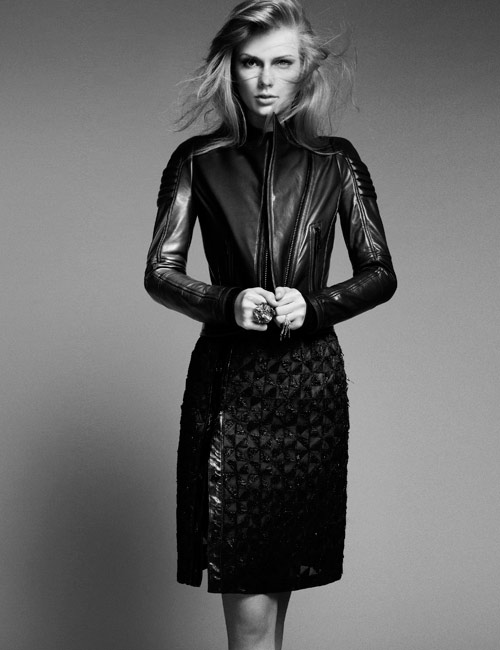
Image Credit: Harper’s Bazaar
This blog post started as a conversation in the break room here at the DWRL. After a discussion of the subversive, alternative female artists of the 90s—not only in band formulation like Riot Grrl or Bikini Kill but especially the singer/songwriters who dominated top 40 radio: Alanis Morissette, Melissa Etheridge, Fiona Apple—someone mused, “Where have all the angry girls gone?”
I can’t say I like the answer. The angry girls have been billed as terrorists (MIA) or criminals (Fiona Apple). Some girls perform anger in a way that only weakly resonates with the general public (Miley Cyrus). But the angry girl has also been rebranded. The inevitable subsumption of alternative culture by the mainstream has cloaked our angry girl in airy dresses with flowing tresses and the voice of an angel to deliver the proverbial “fuck you.” I am, of course, referring to the girl who’s on the cover of every magazine this week as she promotes her new album Red. So hey girl hey, Taylor Swift—this week’s post goes out to you as I explore the paradoxical relationship between the underground and the mainstream, which emerge and subsume and emerge again in a cycle as endless as the couple on the verge of reconciliation (really! I think so!) in “We are Never Ever Getting Back Together.”
Recent comments
2 years 29 weeks ago
2 years 44 weeks ago
2 years 44 weeks ago
2 years 50 weeks ago
3 years 4 weeks ago
3 years 4 weeks ago
3 years 4 weeks ago
3 years 6 weeks ago
3 years 6 weeks ago
3 years 6 weeks ago